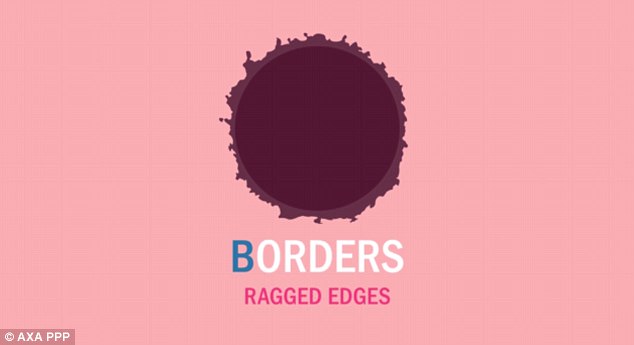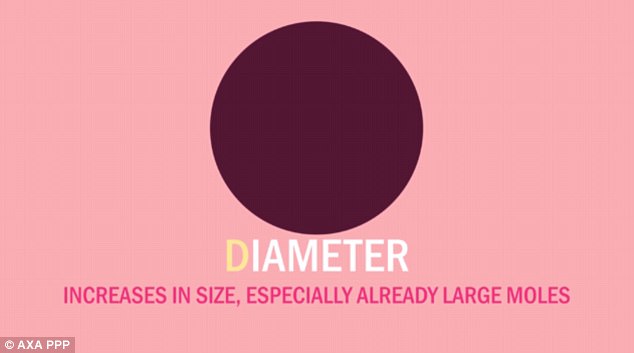Animation graphic reveals the ABCDE of skin cancer warning signs
 As the years go by, our skin loses it springy freshness – and mysterious lumps and bumps start to appear.
As the years go by, our skin loses it springy freshness – and mysterious lumps and bumps start to appear.
These blemishes can come in all shapes and sizes, and many are harmless.
But slight changes could be a red flag: skin cancer is the second most common form of the disease in people under 50.
Melanoma, a type of skin cancer, is one of the most treatable cancers. If caught early, the entire cancer could be removed simply by removing the mole in question.
Basal cell carcinoma is even more manageable – only rare cases spread beyond the site.
And yet, experts warn, the rate of early detection could be much higher.
‘Many people are afraid of checking,’ Dr David Fisher, director of the Melanoma Program at Massachusetts General Hospital, told Daily Mail Online.
‘It’s one of those fear and denial-type things. People would rather not know than find out something scary or devastating.
‘But the thing is, six out of seven melanoma cases are cured just by catching it early and removing it. In other words, early detection could be life-saving.’
He added: ‘That statistic should help motivate people to be really proactive, to realize that there’s a benefit to this. Not every cancer has that type of opportunity to catch it so early. This type of cancer does.’
Moles are clusters of cells that produce a pigment in your skin.
The more moles someone has on their body, the higher the risk of melanoma.
Risk also increases if you have fair skin and red hair, if you sunbathe and if you use sunbeds.
Of course, not all moles are dangerous: it’s normal to have them.
However, it can be easy to spot ones that are worth worrying about.
Dermatologists use a simple list of five warning signs, using the rule ABCDE.
This animation (above) explains how they work.
A – asymmetry
This means spotting an irregular shaped mole.
 B – borders
B – borders
Look to see if there are ragged edges to the mole.
 C – color change
C – color change
If a mole changes in color or is a different color in one part than in another.
 D – diameter
D – diameter
Any increase in size should be checked out, but particularly more than about 6mm across.
 E – elevation
E – elevation
In this graphic, the E section is classed as ‘elevation’, telling you to watch out for the mole raising from the surface, especially if it is irregularly raised.
However, Dr Fisher explains, many dermatologists have different classifications for this.
His preferred word is ‘evolving’.
‘Is it changing? Do you notice anything suspicious or concerning? That is key,’ he says.
‘You need to have a very low threshold for what counts as “concerning”. I have yet to find a patient who is mad because it wasn’t melanoma. It’s always worth checking.’
 To learn more about moles and what to look out for, visit AXA PPP Healthcare.
To learn more about moles and what to look out for, visit AXA PPP Healthcare.
Written by Mia De Graf for The Daily Mail ~ May 11, 2017.
FAIR USE NOTICE: This site contains copyrighted material the use of which has not always been specifically authorized by the copyright owner. We are making such material available in our efforts to advance understanding of environmental, political, human rights, economic, democracy, scientific, and social justice issues, etc. We believe this constitutes a ‘fair use’ of any such copyrighted material as provided for in section 107 of the US Copyright Law. In accordance with Title 17 U. S. C. Section 107, the material on this site is distributed without profit to those who have expressed a prior interest in receiving the included information for research and educational purposes. For more information go to: http://www.law.cornell.edu/uscode/17/107.shtml
